The SECURE Act 2.0, which was signed into law on December 29, 2022, is intended to make retirement planning easier and more secure. This is great news because Americans are chronically behind in saving for retirement.
On average, Americans have around $141,542 saved up for retirement, according to the “How America Saves 2022” report compiled by Vanguard, an investment firm that represents more than 30 million investors. However, most people likely have much less. The median 401(k) balance is just $35,345.
The SECURE 2.0 Act attempts to accomplish three goals: Get people to save more for retirement, improve retirement rules and lower employer’ costs of setting up a retirement plan. Some provisions went into effect starting January 1, 2023, while others will go into effect in 2024, 2025 and even later.
How the SECURE Act 2.0 Boosts Retirement Saving
The SECURE Act 2.0 (Securing a Strong Retirement Act of 2022), is an expansion of the SECURE Act, which was signed into law in 2019. The acronym SECURE stands for “Setting Every Community Up for Retirement Enhancement.” The newer bill expands on the original legislation, with new provisions and more opportunities for individuals and employers to save for retirement. This new law aims to make it easier for individuals and employers to save for retirement, and it will provide more secure retirement options.
Most of the changes under the new rules will be phased in over the next few years; they do not take effect right away.
Here are just some of the many ways this legislation will make it easier to save money for retirement:
- Increases the amount that individuals can save in their retirement plans
- [LM1] Enables part-time employees to contribute to 401(k) plans to save for retirement
- Provides tax credits for small employers who offer retirement plans
- Raises the age for required minimum IRA distributions to 73 for 2023 and eventually to age 75
- Allows employers to make 401(k) matching contributions based on employees’ student loan payments
- Allows employees to open emergency savings accounts inside their 401(k) plans
- Enables people to make tax-free and penalty-free rollovers from 529 college savings plans to Roth IRAs, subject to certain limitations
- Allows SEP and Simple IRAs to accept Roth contributions, which are made with after-tax dollars
- Requires automatic enrollment in 401(k) and 403(b) plans.Now, any employer that starts a new plan must automatically enroll newly hired workers, when eligible, and start their contributions at 3 percent of their pay. They can opt out of making these contributions, but they no longer have to opt in. This will help increase the number of people who participate in these retirement savings plans through employers.
Be Aware of Provisions That Might Not Benefit You
As with many situations in life, there are some potential downsides to the SECURE Act 2.0 It is important for you to work with your team of fiduciary advisors to be aware of all the provisions of this legislation so you can avoid potential pitfalls.
For example, in the past, beneficiaries of individual retirement accounts (IRAs) could take distributions from the deceased’s plan over the course of their lives, but now, the new rules state that most non-spousal recipients must take all their distributions within ten years. That could create a real challenge, especially if the beneficiary is employed and those distributions bump him up into a higher tax bracket.
As Always, We Are Here for You!
The SECURE Act 2.0 contains 92 new provisions to promote savings, boost incentives for businesses and offer more flexibility to those saving for retirement.
We are here to guide you through the new rules and to ensure we leverage them to benefit you. Please work with your team of advisors to learn which of the provisions of the new SECURE Act could impact your situation, and how.
We develop comprehensive plans that allow our clients to enjoy their lives today while saving for the future. We can review your current retirement plan and investments for you without cost or obligation. It is never too early or too late to plan for your future. We have helped thousands of people enhance and maintain their lifestyles while simplifying their lives — and we look forward to helping you. Reach out to us any time we can be of service to you, your family or your friends.
- [LM1] Employers already offer matching contributions to employees.
Randy Carver, CRPC®, CDFA®, is the president and founder of Carver Financial Services, Inc., and is also a registered principal with Raymond James Financial Services, Inc. Carver Financial Services, Inc. was established in 1990 with the vision of making people’s lives better — clients, team and community. With this mission, Carver Financial Services has grown to be one of the largest independent financial services offices in the country, managing $2.2 billion in assets for clients globally, as of December 2022. Randy and his team work with individuals who are in financial transition as a result of divorce, retirement or the sale of a business. You may reach Randy directly at randy.carver@raymondjames.com in the office at (440) 974-0808.
The information contained in this post does not purport to be a complete description of the securities, markets or developments referred to in this material. The information has been obtained from sources considered to be reliable, but we do not guarantee that the foregoing material is accurate or complete. Any information is not a complete summary or statement of all available data necessary for making an investment decision and does not constitute a recommendation. Any opinions are those of Randy Carver and not necessarily those of RJFS or Raymond James. Expressions of opinion are as of this date and are subject to change without notice.
Returns are based on the S&P 500 Total Return Index, an unmanaged, capitalization-weighted index that measures the performance of 500 large capitalization domestic stocks representing all major industries. Indices do not include fees or operating expenses and are not available for actual investment. The hypothetical performance calculations are shown for illustrative purposes only and are not meant to be representative of actual results while investing over the time periods shown. The hypothetical performance calculations are shown gross of fees. If fees were included, returns would be lower. Hypothetical performance returns reflect the reinvestment of all dividends. The hypothetical performance results have certain inherent limitations. Unlike an actual performance record, they do not reflect actual trading, liquidity constraints, fees and other costs.
Also, because the trades have not actually been executed, the results may have under- or overcompensated for the impact of certain market factors such as lack of liquidity. Simulated trading programs in general are also subject to the fact that they are designed with the benefit of hindsight. Returns will fluctuate and an investment upon redemption may be worth more or less than its original value. Past performance is not indicative of future returns. An individual cannot invest directly in an index.

 2023 Annual Resource Breakfast
2023 Annual Resource Breakfast











